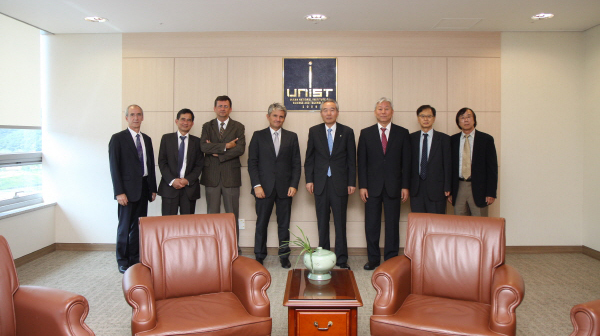On September 1st, UNIST had an opening ceremony of acquiring the Fusion Plasma Stability and Confinement Research Center (FPSCRC), as a foothold institute for fusion energy development.
The event marked an important milestone for UNIST, as this research center will function through funds subsidized by the Ministry of Science, ICT and Future Planning by 2018.
Dr. Gabriele Fioni, Director of the Physical Sciences Division of CEA and Jean-Yves Doyen, French Embassy, as well as Myeun Gwon, Director of the KSTAR Research Center took park in this event to celebrate.
Professor Hyeon K. Park (School of Natural Science), the director of FPSCRC is a renowned scholar in research of the fusion energy development. His work involves researching the fusion plasma physics via advanced imaging equipment and he is the inventor of the world’s very first “3D Nuclear Imaging Equipment.”
FPSCRC will make employ of this cutting edge 3D imaging equipment to understand and control the instabilities in the plasma.
Prof. Park says “Using “3D Nuclear Imaging Equipment,” we are now able to study physical phenomenon that are impossible to examine with current equipment.” He also adds, “Rather than using a stethoscope, with this 3D imaging equipment,” researchers can examine the movement of high-temperature plasmas, like MRI scanners examine human bodies in 3D.
Earlier, UNIST had agreed to execute cooperation for research and development on nuclear fusion with the French Atomic and Alternative Energies Commission (CEA). CEA is currently in the process of developing an experimental reactor, called WEST (Tungsten Environment in Steady-state Tokamak), which is closest to International Thermonuclear Experimental Reactor (ITER) and this requires Prof. Park’s “3D Nuclear Imaging Equipment.”
Prof. Park states “This collaborative research agreement with CEA means acquiring a universally recognized expertise on nuclear fusion and plasma research.” He adds, “The research capability of FPSCRC would be crucial to the success of Korea Superconducting Tokamak Advancement Research (KSTAR), as well as Fusion Energy Development.”













